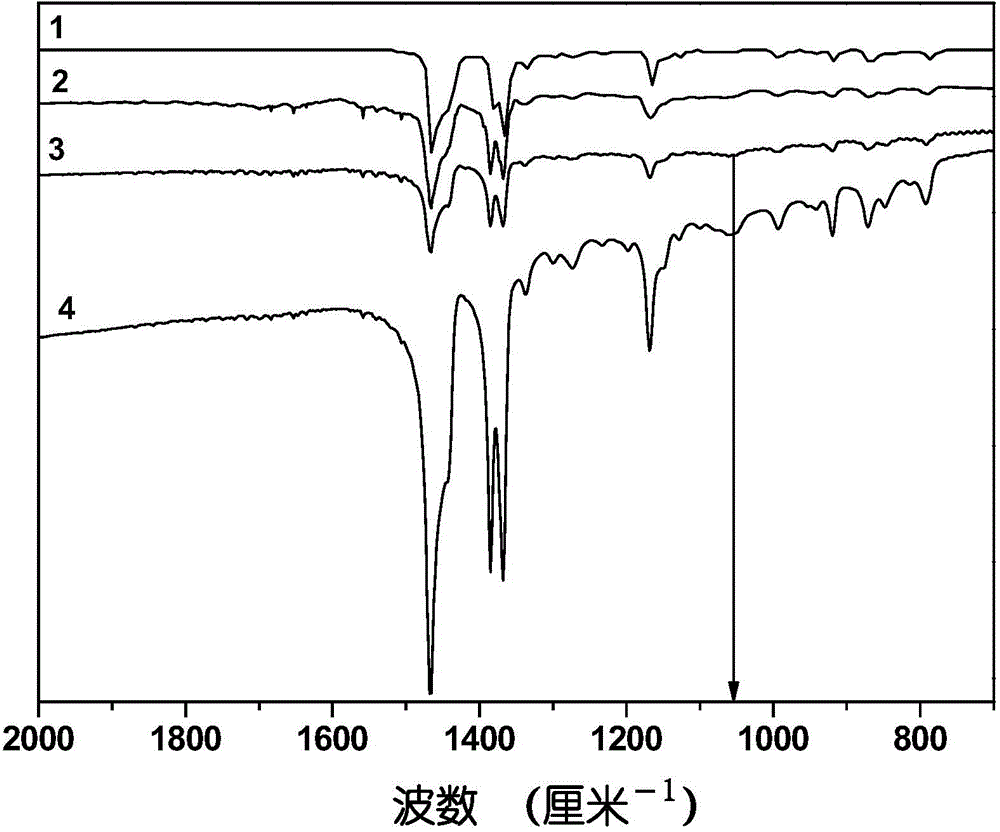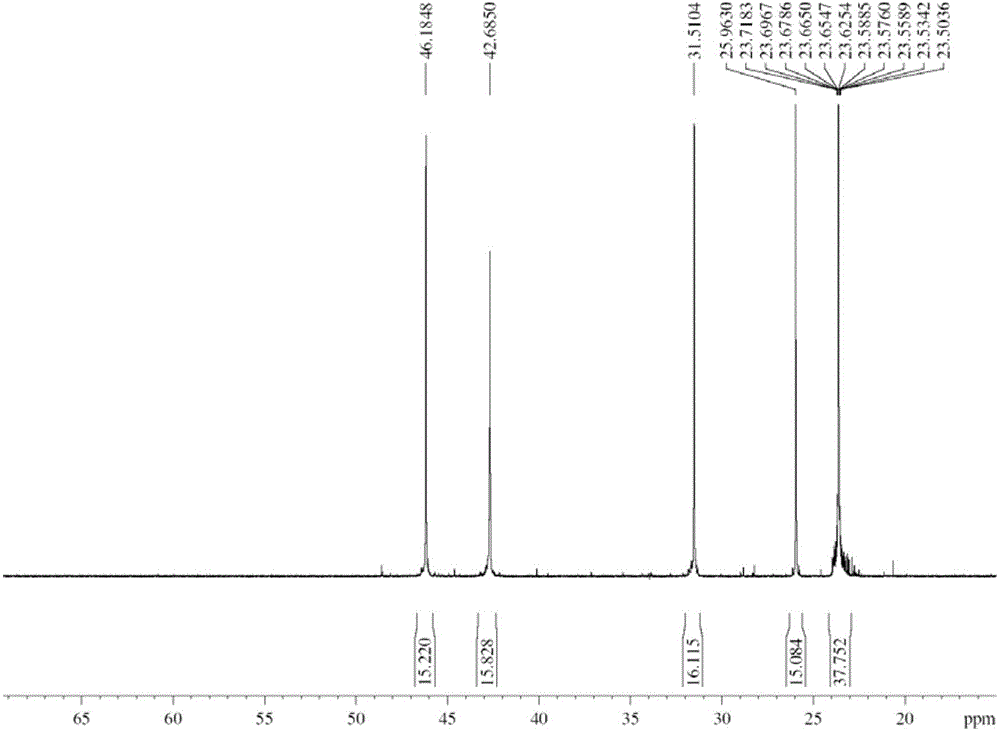Olefin copolymer with polar monomer structural units and preparation method of olefin copolymer
An olefin copolymer and structural unit technology, which is applied in the field of copolymerization of olefins and polar monomers, can solve the problems such as the copolymerization of high-grade alpha-olefins and polar monomers, and the decrease of molecular weight of polymerized active polymers. Heat resistance, improve dyeability, improve surface energy effect
- Summary
- Abstract
- Description
- Claims
- Application Information
AI Technical Summary
Problems solved by technology
Method used
Image
Examples
Embodiment 1
[0066] Example 1 Synthesis of poly(4-methyl-1-pentene-co-4-penten-1-ol)
[0067] The dried 100 ml polymerization bottle was vacuumed and flushed with nitrogen repeatedly three times. At room temperature, start stirring, add 1.0 ml toluene, 3.0 ml 4-methyl-1-pentene, 0.2 ml 4-penten-1-ol, 9.0 ml MAO (methylaluminoxane) toluene solution, 2.0 ml A toluene solution containing 20 micromoles of dimethylsilyl bridged bis(2-methyl-indenyl)zirconium dichloride, and the timer was started. After 20 hours, stop stirring, carefully pour the reaction solution into a beaker, add acidified ethanol, stir for more than 6 hours, filter to obtain the polymer, and vacuum-dry the filter cake at 60°C for 24 hours, weigh to obtain 0.73 g of the polymer, monomer The weight conversion rate was 34%.
Embodiment 2
[0068] Example 2 Synthesis of poly(4-methyl-1-pentene-co-9-decen-1-ol)
[0069] The dried 100 ml polymerization bottle was vacuumed and flushed with nitrogen repeatedly three times. At 50°C, start stirring, add 3.0 ml 4-methyl-1-pentene, 0.5 ml 9-decen-1-ol, 12.0 ml MAO toluene solution, 1.0 ml containing 50 micromole dimethylsilyl (2-Methyl-indenyl)zirconium dichloride in toluene, start timing. After 20 minutes, stop stirring, pour the reaction solution into a beaker carefully, add acidified ethanol, stir for more than 6 hours, filter to obtain the polymer, and vacuum-dry the filter cake at 60°C for 24 hours, weigh to obtain 0.85 g of the polymer, monomer The weight conversion rate is 35%.
Embodiment 3
[0070] Example 3 Synthesis of poly(4-methyl-1-pentene-co-9-decen-1-ol)
[0071] The dried 100 ml polymerization bottle was vacuumed and flushed with nitrogen repeatedly three times. At room temperature, start stirring, add 3.0 ml 4-methyl-1-pentene, 0.5 ml 9-decen-1-ol, 12.0 ml MAO toluene solution, 1.0 ml containing 50 micromole dimethylsilyl bridge bis( 2-methyl-indenyl) toluene solution of zirconium dichloride, start timing. After 2 hours, stop stirring, carefully pour the reaction solution into a beaker, add acidified ethanol, stir for more than 6 hours, filter to obtain the polymer, and vacuum-dry the filter cake at 60°C for 24 hours, weigh to obtain 0.83 g of the polymer, monomer The weight conversion rate was 34%.
PUM
| Property | Measurement | Unit |
|---|---|---|
| melting point | aaaaa | aaaaa |
| melting point | aaaaa | aaaaa |
| melting point | aaaaa | aaaaa |
Abstract
Description
Claims
Application Information
 Login to View More
Login to View More - R&D Engineer
- R&D Manager
- IP Professional
- Industry Leading Data Capabilities
- Powerful AI technology
- Patent DNA Extraction
Browse by: Latest US Patents, China's latest patents, Technical Efficacy Thesaurus, Application Domain, Technology Topic, Popular Technical Reports.
© 2024 PatSnap. All rights reserved.Legal|Privacy policy|Modern Slavery Act Transparency Statement|Sitemap|About US| Contact US: help@patsnap.com










